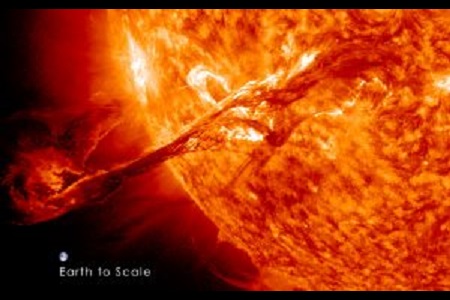
NASA’s Polarimeter to Unify the Corona and Heliosphere (PUNCH) mission will share a ride to space with NASA’s Jet Propulsion Laboratory’s Spectro-Photometer for the History of the Universe, Epoch of Re-ionization, and Ices Explorer (SPHEREx) mission.
The missions will launch no earlier than April 2025 on a SpaceX Falcon 9.
Speaking about the rideshare, Craig DeForest, PUNCH principal investigator at Southwest Research Institute in Boulder, Colorado, said: “It’s great to have a definite launch date and vehicle, and we’re looking forward to working with the SPHEREx team as we `carpool’ to orbit. Rideshares are a great way to save money by taking better advantage of each rocket’s capability.”
The agency said it updated the SpaceX contract to include PUNCH on the same launch but did not disclose any change in contract value. The PUNCH team was able to adjust its schedule to meet the new launch date of no earlier than April 2025 and used this new schedule flexibility to mitigate some schedule constraints due to supply chain challenges.
PUNCH, which consists of four suitcase-sized satellites, will focus on the Sun’s outer atmosphere (the corona) and how it generates the solar wind. The spacecraft also will track coronal mass ejections – large eruptions of solar material that can drive large space weather events near Earth – to better understand their evolution and develop new techniques for predicting such eruptions.
The four satellites will spread out around Earth along the day-night line, which enables it to create a continuous, complete, view of the corona and inner solar system. Three of the PUNCH satellites will carry identical Wide Field Imagers, which, together, image the corona and solar wind over a 90-degree field of view (out to 45 degrees away from the Sun). In skywatching terms, 90 degrees covers the part of the sky from the horizon to the point directly overhead. The fourth PUNCH satellite carries a Narrow Field Imager coronagraph, which will study regions closest to the Sun. All four cameras will be synchronized in flight, so that the mission science team can combine their images seamlessly into a single large field of view.
PUNCH is led by Southwest Research Institute’s office in Boulder, Colorado. The mission is managed by the Explorers Programme Office at NASA’s Goddard Space Flight Center in Greenbelt, Maryland, which is managed by Goddard for NASA’s Science Mission Directorate in Washington. Southwest Research Institute will build the Wide Field Imagers and will build and operate PUNCH. The Naval Research Laboratory in Washington will build the Narrow Field Imagers and provide optical testing. RAL Space in the United Kingdom will provide detectors and calibration for the mission.












Add Comment